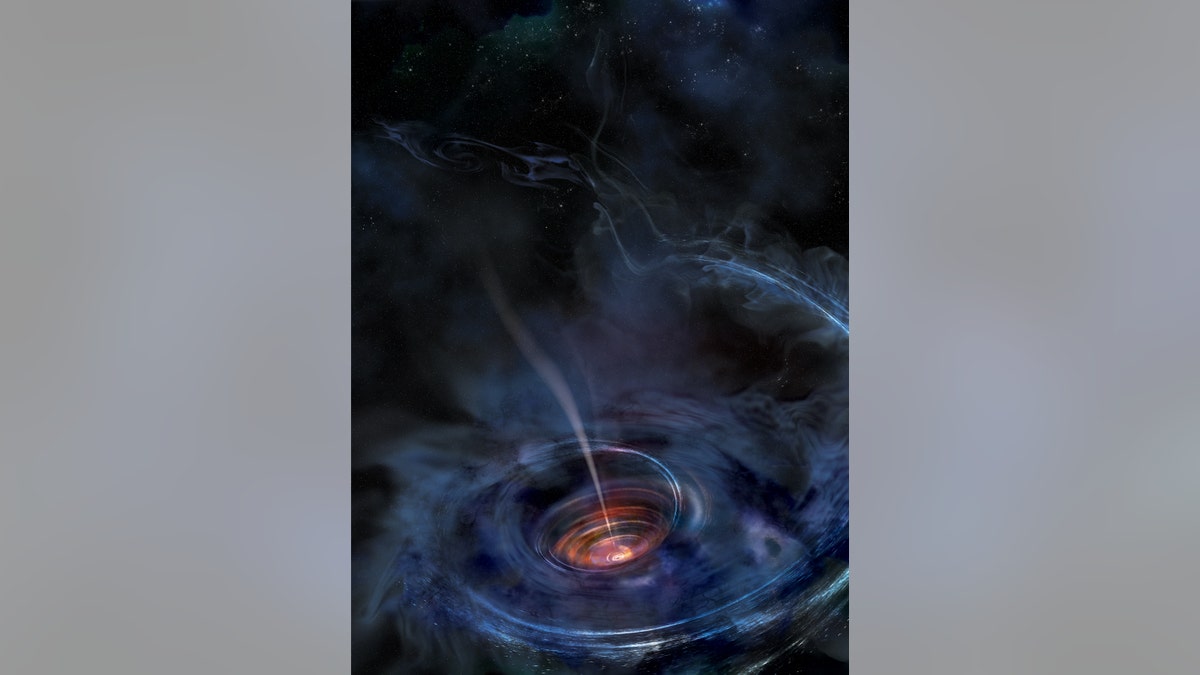
Artist's rendering of a thick accretion disk around a supermassive black hole following a tidal disruption event. (NASA/Swift/Aurore Simonnet/Sonoma State University)
They’re known as tidal disruption events: when a black hole consumes a nearby star.
And now, scientists have observed a dramatic tidal disruption event in a galaxy nearly 4 billion light years away, involving a black hole that’s approximately a million times as massive as our sun. The matter that this supermassive black hole swallowed created what’s called an accretion disk around the black hole.
The supermassive black hole, called Swift J1644+57, was dormant— as 90 percent of black holes are— until it sucked in the star, shredding it. That event allowed scientists to observe the black hole.
“Tidal disruption events offer us this rare view at the most common kind of supermassive black hole in the universe— these so-called dormant supermassive black holes,” Erin Kara, a Hubble postdoctoral fellow at the University of Maryland, said in a video explaining the discovery. “Tidal disruption events, where the stellar debris causes the formation of a temporary accretion disk, offers us a way to probe this population of supermassive black holes.”
What’s more, that accretion disk amplified x-ray flares— and the location of where those x-rays are coming was surprising.
“Previously, astronomers had thought that the x-ray emission is coming from far out in a jet,” Kara said. “But what we’re finding with these observations, is that the x-ray emission is coming from flares very close to the supermassive black hole. And we can use these observations to probe properties of the black hole itself.”
“For instance, we found that the mass of the black hole is something on the order of a million times the mass of the sun,” she added.
Related:
The researchers used a novel, sonar-like technique called x-ray reverberation mapping to examine the black hole’s gravitational well. The findings are published in the journal Nature.
Follow Rob Verger on Twitter: @robverger
